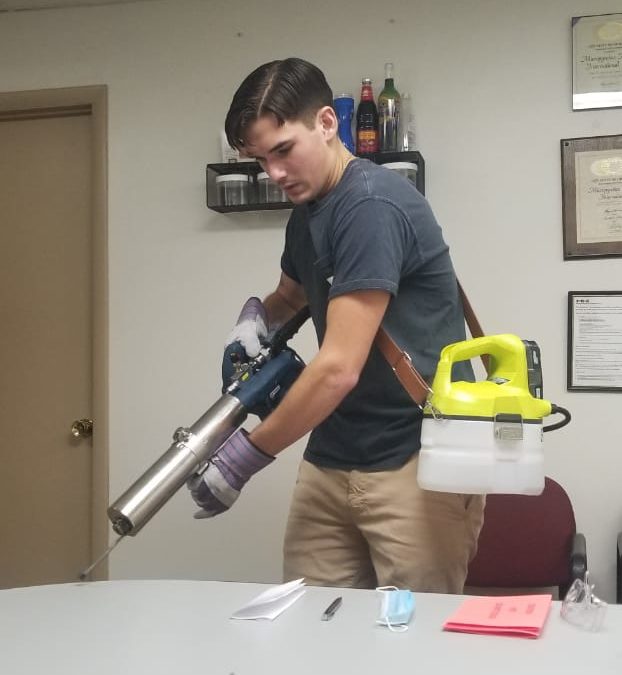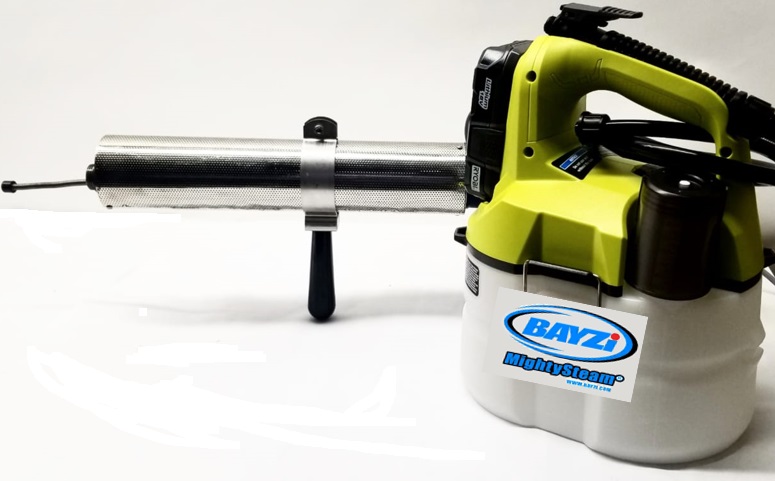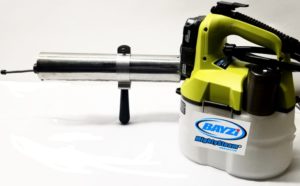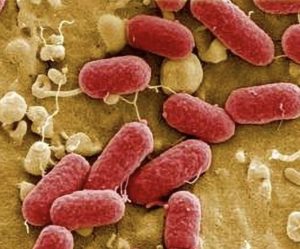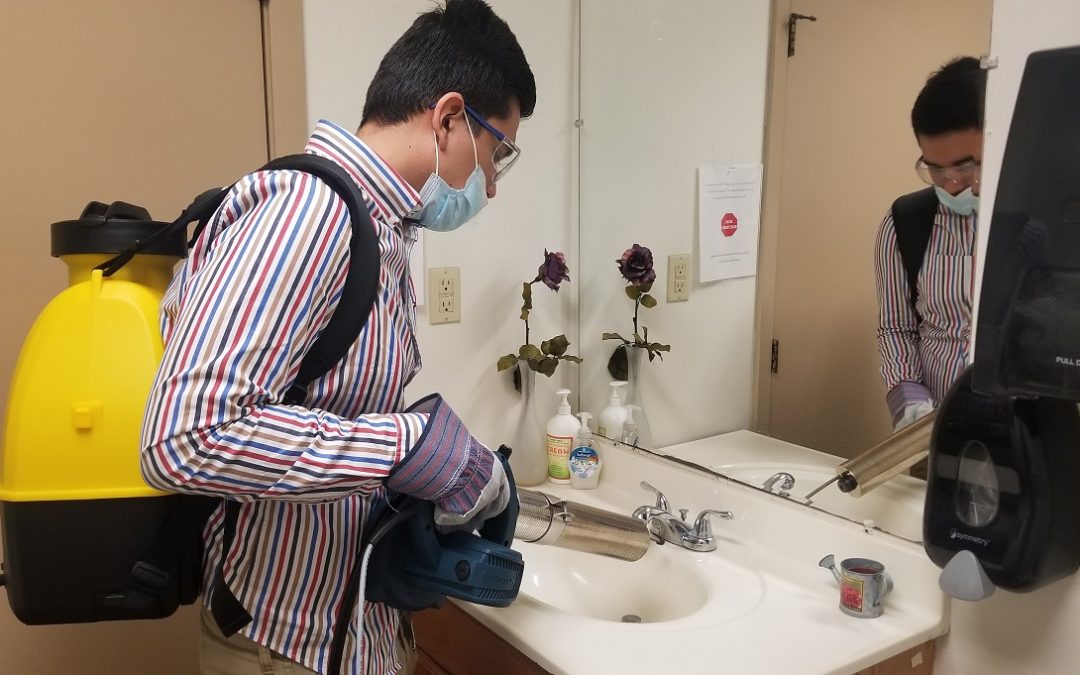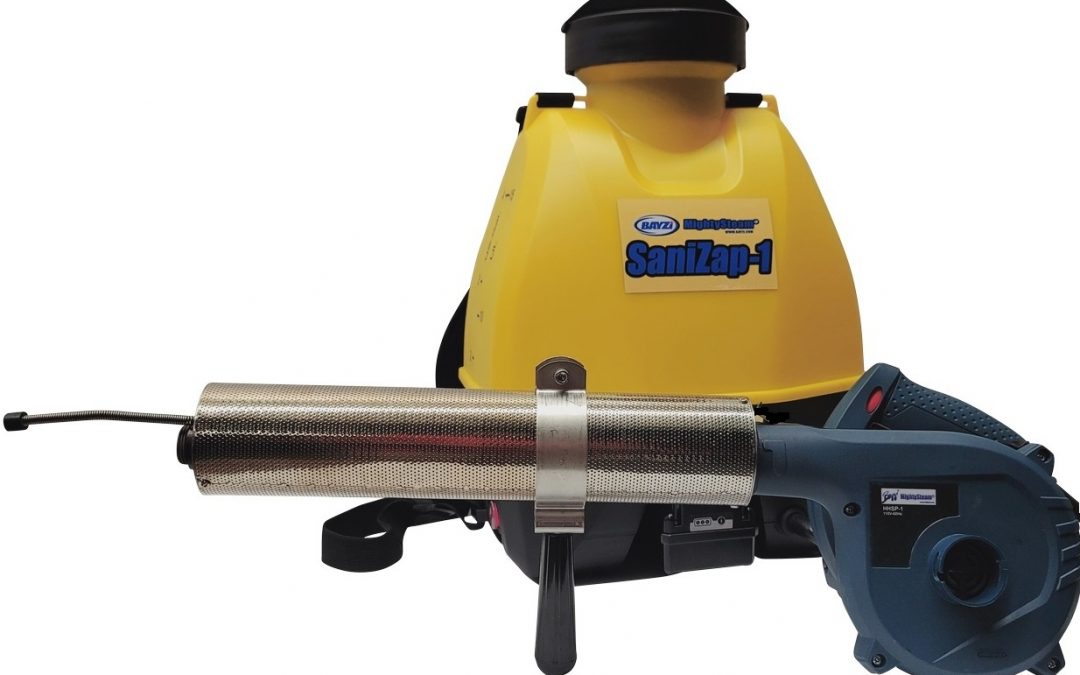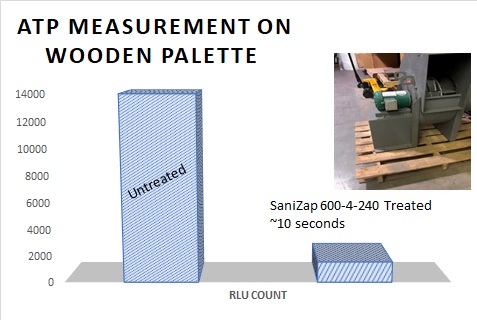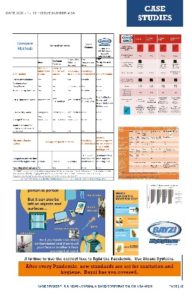
Oct 23, 2020 | News
Researchers from the Technical University of Munich in Germany and the University of Helsinki in Finland led a study that discovered a receptor called neuropilin-1 gives the novel coronavirus a leg-up in infecting our tissues. https://www.sciencealert.com/a-second-key-used-by-sars-cov-2-to-enter-cells-could-explain-why-it-s-so-infectious.
Why is it more infectious to men? Antibodies and Interferons with the X-Chromosome?

Oct 16, 2020 | News
People who were infected actually need to keep future infections of all kinds to a minimum. This appears to be the long Covid problem. See also opportunistic pathogens/infections.
https://www.aol.com/article/news/2020/10/15/long-covid-may-affect-multiple-parts-of-body-and-mind-doctors-say/24651271/?.tsrc=bell-brknews
Bayzi Corporation introduces the SaniZap®-mini for home use (B to C products 110V).
SaniZap-mini.
What are the geopolitics of vaccine distribution- one view -December 2020
Oct 4, 2020 | News
Please use the ATP test over uncontrolled UV tests for measuring the hygienic quality of a surface. Click to – “How does one measure the hygienic quality or cleanliness of a surface or object. What does clean mean”.
UV light can be used for a multitude of purposes. The less intense (lower frequency UV can be used as a diagnostic tool). More intense energy UV radiation (high frequency UV) can be used to alter bacteria. The three main types of UV rays are UVA, UVB, and UVC. Because UVC rays have the shortest wavelength, and therefore highest energy, they are capable of killing bacteria and viruses, also called pathogens. UVC light has a wavelength of between 200 and 400 nanometers (nm). It is highly effective at decontamination because it destroys the molecular bonds that hold together the DNA of viruses and bacteria, including “superbugs,” which have developed a stronger resistance to antibiotics. But UVC can quickly impact and effect human skin and other tissues.
Are there cheap UV tests to view bacterial contamination? Yes if the bacteria (like the coliform bacterium) can fluoresce or be made to fluoresce – but such tests are not universal or reliable indicator of Bacterial Contamination?
Many natural substances do glow under UV: semen, urine, mineral oil, earwax, perspiration. Pest control companies use UV light to detect rat feces and urine which also fluoresce under UV. Some bugs can be detected. Cells can be stained (decorated) with salts or reagents like tetrazolium chloride (CTC) and salts.

Fecal Coliform Bacteria:: Source https://www.caryinstitute.org/eco-inquiry/hudson-data-jam-competition/datasets/fecal-coliform-bacteria-oxygen-levels-manhattan
For UV fluorescence radiation must be absorbed at a certain wavelength and reemitted at another (visible wavelength). A recent study swabbed a number of surfaces in critical healthcare situations and looked at levels of bacterial contamination of surfaces that fluoresced under UV versus those that didn’t https://rectofossal.com/bacteria-glow-dark/. “.. colony densities were significantly higher in non-fluorescing areas versus fluorescing areas! It was also found that the color of fluorescence may determine the level of sanitation necessary to properly clean a room. Therefore one cannot argue the fact that surfaces that do not fluoresce under UV are clean or free of bacterial contamination i.e. lack of fluorescence is not indicative of the absence of bacterial contamination.” Fluorescence is diagnostic technique – bacteria can also be stained or genetically engineered so they will fluoresce. Fluorescent biomolecules such as flavins and the amino acid tryptophan do exhibit fluorescence. These are often present in bacteria and other living cells but fluorescence is very specific: a particular molecule will absorb at a particular wavelength and re-emit at another, specific wavelength – molecules like tryptophan if buried in a cell or its membrane might not show adequate fluorescence to be noticed at least without sensitive sensors.
Riboflavin (Vitamin B2) reliably emits at a bright green 560nm when exposed to a broad spectrum of UV and bacteria are rather partial to flavins – as are we all: they are essential for metabolism. This is the molecule most UV systems easily detect.
What about UV to kill bacteria: We do not recommend it. Intense high frequency UV radiation can kill bacteria, but it can cause skin and other cancers.
Oct 1, 2020 | News
How to compare biocides and other disinfecting chemicals
http://www7.nau.edu/itep/main/HazSubMap/docs/HHWaste/DisinfectantsComparisonChart.pdf
More Items:
- Reduction in the microbial load on high-touch surfaces in hospital rooms by treatment with a portable saturated steam vapor disinfection system by Sexton, Jonathan D., MS; Tanner, Benjamin D., PhD; Maxwell, Sheri L., BS; More…AJIC: American Journal of Infection Control, 2011, Volume 39, Issue 8
- Modern technologies for improving cleaning and disinfection of environmental surfaces in hospitals by Boyce, John M, Antimicrobial resistance & infection control, 2016, Volume 5, Issue 1
- High-touch surfaces: microbial neighbours at hand by Cobrado, L; Silva-Dias, A; Azevedo, M M; More,…European Journal of Clinical Microbiology & Infectious Diseases, 11/2017, Volume 36, Issue 11
- Cleaning & Disinfecting: Assessment of Steam as a Potential Alternative to Bleach by Tenaglia, Kathleen A., Thesis 2020, Department of public health, University of Massachusetts Lowell
- …………See other Bayzi news posts below for additional titles
Sep 30, 2020 | News
Coronavirus spike proteins change shape into 10 different shapes to invade cells.
The spikes morph into at least 10 different shapes, according to a new study. The authors classify ten different molecular species including the unbound, closed spike trimer. Read more ….Source Benton, D.J., Wrobel, A.G., Xu, P. et al. Receptor binding and priming of the spike protein of SARS-CoV-2 for membrane fusion. Nature (2020).
Sep 15, 2020 | News
No sign of Salmonella outbreak ending as U.S. patient count tops 1,000

Sep 5, 2020 | News
A biocide is intended to destroy, deter, render harmless, or exert a controlling effect on any harmful organism. The US Environmental Protection Agency (EPA) uses a definition for biocides as “a diverse group of poisonous substances including preservatives, insecticides, disinfectants, and pesticides used for the control of organisms that are harmful to human or animal health or that cause damage to natural or manufactured products” (source https://en.wikipedia.org/wiki/Biocide).
We rely on biocides for many things. For example, we disinfect our hands at hospitals to avoid spreading bacteria, and we use mosquito repellents to avoid nasty bites.
Almost all of the biocidal active substances have a relative high toxicity, Although the definition of biocides is quite strict, today during the Covid period little distinction is made at the layman level for disinfectants that contain high does of alcohols and approved biocides. One must follow all chemical handling and use recommendations.
EPA Registered Hard Surface Disinfectants Comparison Chart
The concerns with biocides
Attention to workers’ and visitors’ exposure to chemicals in the product selections, particularly respiratory and dermal irritants or asthmagens, is an important consideration. “Cleaning and disinfecting are important parts of a comprehensive infection prevention strategy. While demand for more effective cleaning and disinfecting is growing, there is also increasing evidence that exposure to cleaning and disinfecting can result in acute and chronic health effects, particularly respiratory illness.“ (Quinn et al, 2015). The authors do suggest more research is needed on how to weigh the type of cleaner used with the potential for occupational exposure with the type of cleaning and disinfection that is appropriate for a given area (Bello et al, 2009; Quinn et al, 2015). Some ideas to reduce occupational exposure are modifications to cleaning schedules, appropriate product selection, and ventilation to reduce exposure. Use of personal protective equipment is also important (Weber et al, 2016). During those years steam sanitizers were not available. Now they are.
Weber, D. J., Consoli, S. A., & Rutala, W. A. (2016). Occupational health risks associated with the use of germicides in health care. American journal of infection control, 44(5), e85-e89.
Bello, A., Quinn, M. M., Perry, M. J., & Milton, D. K. (2009). Characterization of occupational exposures to cleaning products used for common cleaning tasks-a pilot study of hospital cleaners. Environmental Health, 8(1), 11.
Quinn, M. M., Henneberger, P. K., Braun, B., Delclos, G. L., Fagan, K., Huang, V., … & Maher, K. A. (2015). Cleaning and disinfecting environmental surfaces in health care: toward an integrated framework for infection and occupational illness prevention. American journal of infection control, 43(5), 424-434.
Quinn, P. J., Markey, B. K., Leonard, F. C., Fitzpatrick E. S., Fanning, S., Hartigan P. 2011. Veterinary Microbiology and Microbial Disease. Second Edition. John Wiley & Sons.

Sep 4, 2020 | News
Source: https://www.aopa.org/news-and-media/all-news/2020/august/20/improper-disinfectant-appears-to-damage-two-skyhawks
Bayzi Corporation supports GA (general Aviation) aircraft users. If you think that the steam sanitation could work for you please contact us at Bayzi Corporation. We will be happy to arrange for a free one time Top-Off Sanitation for up to three GA small aircraft, per airport within 50 miles of our manufacturing plant (Cincinnati, OH), for all those who request it during September 2020.
This service is recommended by the GA pilot employees of Bayzi Corporation (Cincinnati USA).
Prior to making the request please familiarize yourselves with the information on Bayzi.com. The contact request is made here.*
Bayzi Corporation will provide a price reduction coupon to GA aircraft owners outside and in the Cincinnati area for the purchase of SaniZap® Units.
* The free top-off will be made only to non electrical, non avionics, non critical parts like the seats and carpets. Can be performed only under
the supervision of the aircraft owner.

Sep 1, 2020 | News
Can we quantify cleanliness? What is ATP?
This is commonly measured by an ATP (Adenosine Triphosphate) test-meter that measures RLU’s (Relative Light Units) from swabbed regions. The number and types of bacteria present on a surface is of concern for infection control, but bacterial tests are sometimes very specific and do not yield the overall hygienic condition or cleanliness of a surface. RLU measurements on the other hand are more appropriate to define general cleanliness. ATP is a molecule found in and around living cells, and as such it gives a direct measure of biological concentration and health. ATP (adenosine triphosphate) is a molecule made up of an adenine ring, a ribose sugar, and most importantly 3 phosphates. In the most basic terms, this molecule is the body’s currency for all of its functions. Anything that the body does requires energy which all comes from ATP.The fats, carbs, and proteins that we eat are broken down and metabolized in order to replenish the used ATP in our bodies. One of the phosphates breaks off and releases a burst of energy. When this happens the molecule turns into ADP (adenosine diphosphate) because there is only 2 phosphates attached. Through a series of reactions another phosphate is attached and the molecule becomes ATP again. The ATP in our bodies are recycled after they produce energy.
ATP is quantified by measuring the light produced through its reaction with the naturally occurring enzyme luciferase using a luminometer. The amount of light produced is directly proportional to the amount of ATP present in a sample.
RLU (Relative Light Units) is the unit for measuring the ATP (Adenosine Triphosphate). ATP has been found to be a sensitive indicator molecule for the presence of biological residues due to its universal presence in all living cells (microbes, animal and plant cells). When a test swab is activated, a bio-luminescent reaction occurs, generating light output. RLU measurements will vary for the type of meter. However, because the ATP bio-luminescence reaction is linear, the more ATP present, the higher the contamination- indicates poor hygiene and vice versa. The presence of ATP on the surface indicates that it has not been adequately cleaned. An increase in “dirt” (mostly biological residues) on a surface is displayed in an increase in the amount of ATP present on that surface. Thus ATP an effective marker for the assessment of the hygienic status of an environmental surface. RLU’s measure this ATP.
ATP tests (the RLU measurements) are not intended to replace microbial tests but there is often a direct correlation between the results of the two types of measurements when done concurrently.
It is a common mistake for users to expect a close agreement between RLU measurements when comparing different systems (different makes of RLU measurement meters). This is due to the differences in RLU sensitivity, scales and outputs and the inherent variation of this biological assay and variations from sample distribution and sample collection. Therefore the ATP hygiene test (RLU counts) should not be considered as a precision assay for bacterial counts. The ATP hygiene test application is a sensitive, direct, objective test of cleaning efficiency and risk. It is a quick risk analyzer that help you suspect if there is a need to do further laboratory tests for a more detailed test for bacteria and particular species of bacteria. Care should be taken when comparing the system performance from different instruments or suppliers. Comparisons ahould be made with the same test machines and conditions.
The RLU measurements are great to infer if the cleanliness quality of a test surface or object has changed or if a particular cleaning system has efficacy in improving cleanliness. It is not a quantitative test for bacterial counts as it indicates different information than a CFU count test does.
When using RLU it is common to define a threshold of cleanliness. This is subjective in the sense that it depends on the machine employed. In fact some studies show that there is poor correlation between active bacteria and ATP measurements. ( Colbert et. al. Healthcare Infection, 2015,20, 108–114 Researchhttp://dx.doi.org/10.1071/HI15011), However this test is used often.
Here is a chart from A suggested sampling algorithm for use with ATP testing for cleanliness measurement (by G.S. Whiteley, T.O. Glasbey, P.P. Fahey,
Volume 21, ISSUE 4,
P169-175, December 01, 2016 https://doi.org/10.1016/j.idh.2016.11.003).Suggested cleanliness thresholds and corresponding RLU for 3 ATP device brands.

Last Page Vol. 3A
Aug 23, 2020 | News
This issue comes up often when comparing cleaning techniques. For example when comparing chemical use and duration to rapid clean steam.
Bleach often contains Sodium Hypochlorite — Sodium hypochlorite can cause severe eye irritation and if ingested can cause severe stomach irritation and sores. Sodium Hydroxide is also often used to stabilize household bleach. It is extremely caustic and can cause significant skin irritation if touched.
Other simple cleaners contains trace doses of 2-butoxyethanol — sustained inhalation of high concentrations (100-500 ppm) of this compound has been found to cause adrenal tumors in tested animals. Please consult toxicologists for a definitive analysis.
An non-intuitive feature of using chemicals over steam is noted in the energy usage. See for example (click).
Bacteria are becoming resistant to even powerful drugs like antibiotics. https://en.wikipedia.org/wiki/List_of_antibiotic-resistant_bacteria
How do bacteria become extremophiles in space.
A Ball of Bacteria Survived for 3 Years … in Space!
New research from the Japanese Tanpopo mission adds to scientists’ understanding of how living organisms can endure the hostile environment.
Read: https://apple.news/AxZnbdZKdRZOZJlF94O0qdA

- For COVID-19 and many other viruses one needs the surface to be in contact with a biocidal chemical for over 10 mins https://www.cdc.gov/coronavirus/2019-ncov/community/reopen-guidance.html# See also https://extension.colostate.edu/docs/pubs/foodnut/kitchen-sanitize.pdf See also https://www.pennmedicine.org/updates/blogs/health-and-wellness/2020/april/cleaning-against-covid See also https://www.pennmedicine.org/updates/blogs/health-and-wellness/2020/april/cleaning-against-covid
- Warning bells are sounding for the overuse of chemicals. https://www.ncbi.nlm.nih.gov/pmc/articles/PMC5685540/ See also WHO says please do not spray disinfectants https://www.cnn.com/world/live-news/coronavirus-pandemic-05-16-20-intl/h_0f2325d2b58893ae656ac8e522afad79
- Protecting the environment from a new problem from harsh and greasy chemicals, is beginning to cause serious worries. https://www.cnn.com/world/live-news/coronavirus-pandemic-05-16-20-intl/h_0f2325d2b58893ae656ac8e522afad79
